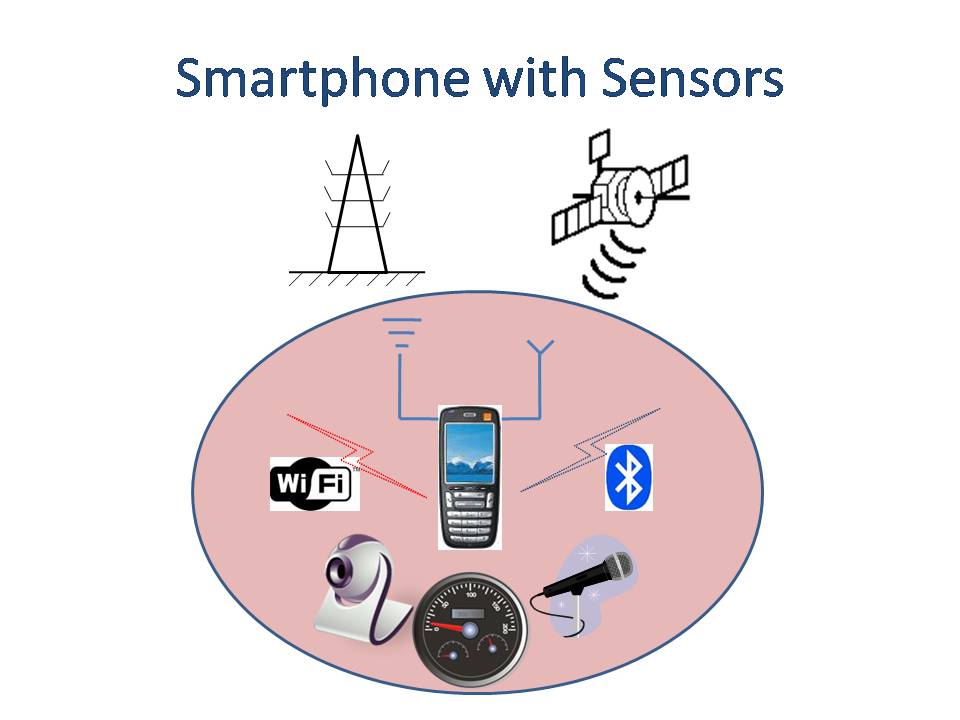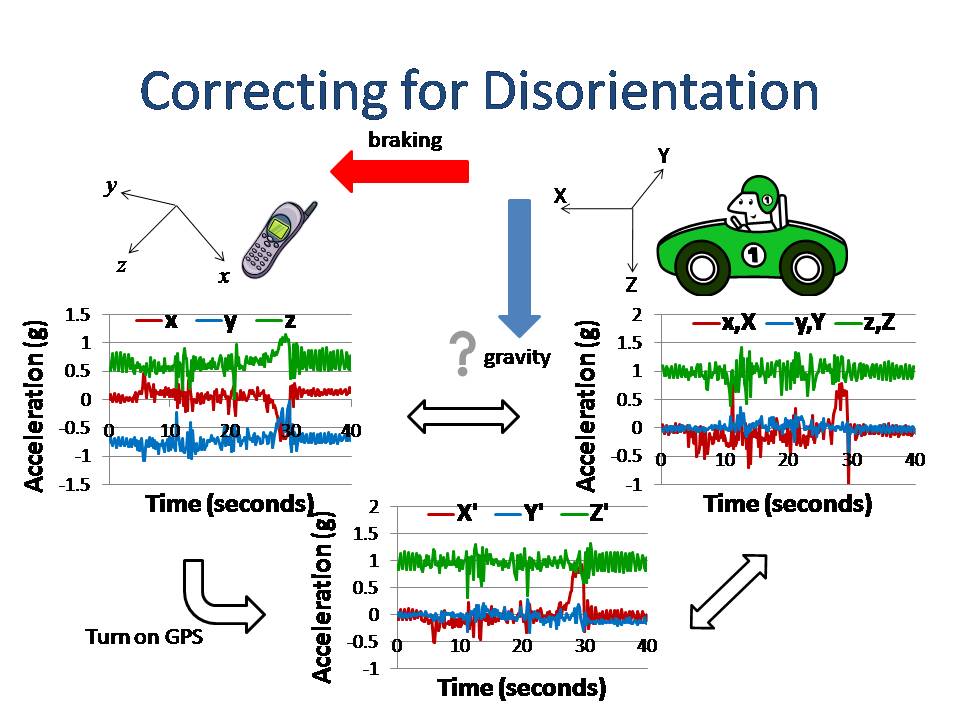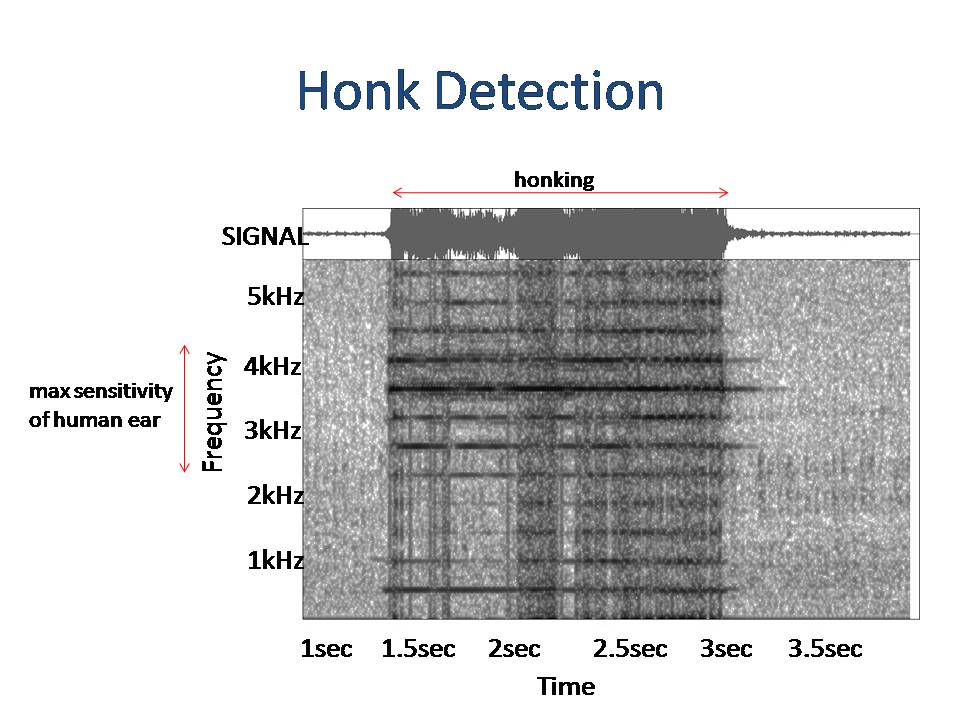NEWS:
The ACM SenSys 2008 paper on Nericell (opens in new tab) received both the ACM SIGMOBILE Test-of-Time Award (opens in new tab) and the ACM SenSys Test-of-Time Award (opens in new tab) in 2019.
The Nericell project focuses on road and traffic monitoring using an ensemble of mobile smartphones carried by people in normal course. The vision is that when a user who is participating in Nericell puts their phone in their pocket and starts driving, software on the phone will automatically monitor road and traffic conditions along their drive, and convey this information to a service in the cloud for aggregation and reporting.

A key aspect of Nericell is rich sensing using an array of sensor that some or all of the participating smartphones may have: Bluetooth, cellular radio, microphone, accelerometer, and GPS. See the above picture for an illustration of the sensors that a high-end smartphone might have today and that could well become commonplace in the future. Rich sensing is critical in the context of the cities of the developing world, where road conditions tend to be variable (e.g., a lot of potholes), vehicle types varied (e.g., 2-wheelers, 3-wheelers, cars, etc.), and the flow of traffic chaotic (e.g., a lot of braking and honking). For instance, the accelerometer is used to detect potholes and the microphone to detect honking. In contrast, much of prior work on traffic monitoring has focused on the developed world, where roads tend to be of high quality and the flow of traffic organized, so that traffic conditions can be characterized simply by the speed and volume of vehicles flowing through a road.
This video (opens in new tab) illustrates the traffic dynamics at an intersection in Bangalore.
There are several technical challenges that Nericell seeks to address. First, there is the general challenge of minimizing the energy consumption of the participating mobiles phones. To accomplish this goal, we employ triggered sensing, wherein a sensor that is relatively inexpensive from an energy viewpoint is used to trigger the operation of a more expensive sensor when needed. For example, the accelerometer is used to detect a high incidence of braking, which then triggers microphone-based sensing to check for honking.
A second challenge arises in the context of an accelerometer that is disoriented because the phone that it is embedded in is at an arbitrary orientation with respect to the vehicle. Nericell needs to determine the orientation of the disoriented accelerometer, so that the measured accelerations along its x, y, and z axes can be mapped to accelerations along the true X, Y, and Z axes. As illustrated in the figure below, Nericell accomplishes this by leveraging the persistent force field exerted by gravity and the transient force field arising from braking episodes.

Yet another challenge is the need to process and reduce the sensed data locally on the phone, both for reasons of communication efficiency and privacy. For instance, users would likely not be comfortable having audio recordings made on their phones shipped to the cloud for further processing. Instead, Nericell processes audio locally, in particular, to detect honking. The figure below shows what an episode of honking looks like in the frequency domain. To detect honking efficiently, we use a simple yet effective heuristic that looks for energy spikes in the 2.5-4 KHz range, which happens to correspond to the range where the sensitivity of the human ear is maximum.

The information gathered by the ensemble of smartphones is aggregated and used to annotate a map with information such as the locations of bumpy roads and chaotic intersections. This would allow novel forms of route planning, for example, helping a user find a relatively stress-free route, i.e., optimizing for “blood pressure” rather than for driving time or driving distance!
-
- TrafficSense: Rich Monitoring of Road and Traffic Conditions using Mobile Smartphones (opens in new tab), Prashanth Mohan, Indian Institute of Science, Bangalore, Feb 2008.
- TrafficSense: Rich Monitoring of Roads and Traffic Using Mobile Smartphones, Venkat Padmanabhan, Berkeley/Princeton/univ of Washington, March 2008.
- TrafficSense: Rich Monitoring of Roads and Traffic Using Mobile Smartphones (opens in new tab), Ram Ramjee, MIT/univ of Massachusetts, March 2008.
- Nericell: Rich Road and Traffic Monitoring using Mobile Smartphones (opens in new tab), Prashanth Mohan, ACM SenSys, Raleigh, NC, Nov 2008.
-
- Inside Microsoft Research: The Cutting Edge on Display (opens in new tab) (PC World, 04 Mar 2008)
- TechFest takes a worldview (opens in new tab) (Seattle Post-Intelligencer, 05 Mar 2008)
- Microsoft Research hits the road with mobile tech (opens in new tab) (ComputerWorld Canada, 11 Mar 2008)
- Microsoft’s TechFest showcased an array of technologies (opens in new tab) (The Economic Times, 20 Mar 2008)
- TechFest 2008: Mobile-Systems Distributed Operation for Sensing (opens in new tab) (Channel 10, 20 Mar 2008)
-
人员
Venkat Padmanabhan
Managing Director, Microsoft Research India
Ramachandran Ramjee
Partner Research Manager
